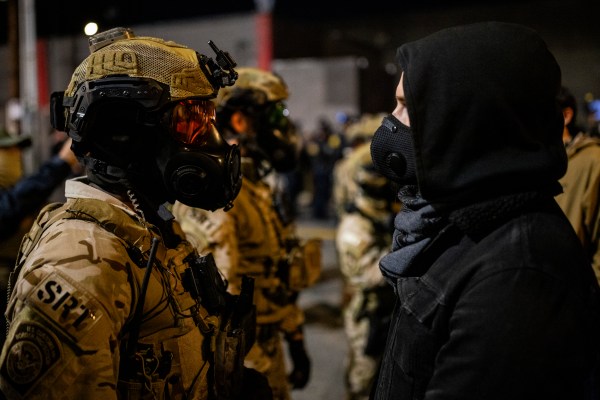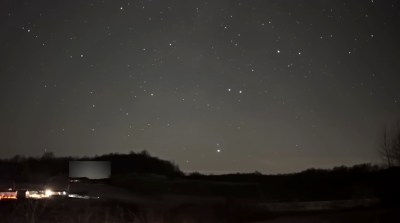Since media outlets started reporting on the perplexing yet numerous drone sightings reported over New Jersey last week, video footage of unidentified aerial objects has rained down from the internet, with many social media users claiming the objects to be drones.
Last week, an X account named “Joe Rogan Podcast”—a fan-run account with 1.3 million followers but no affiliation with Rogan—posted a video that purportedly depicted drones flying in the skies over New Jersey.
“Drones over New Jersey, timelapse,” the account tweeted along with the 79-second video. The account did not mention where it obtained the video or any evidence for why the moving objects shown in the video are drones specifically.
The claim about the video is false. The X video was taken from a YouTube account, and the owner of the account stated he is located in Wisconsin, not New Jersey. Further, the moving objects seen in the video appear to be satellites, not drones.
A man named Todd Brown, who describes himself as an electronics and camera-enthusiast in his public profile, posted the video to YouTube on December 8. His video, headlined “Now this was an Awesome sight !!!” explained how he recorded the footage in the post’s caption. “Pointed my 50mm F0.95 lens at the horizon for 3 hours. Put the mostactive clip up. About an hours worth of footage sped up to 64x,” he said. “Blows me away the things flying around.”
The Dispatch Fact Check has reached out to the X account for comment and to Todd Brown for confirmation.
While Brown did not mention what the moving objects might be, he later edited the video caption, discrediting claims that the footage depicted drones spotted over New Jersey. “Alot of people are highjacking this video and saying it has to do with Drone sightings in N.J.,” he said. “I was looking to the West and in Wisconsin. So Exact opposite direction folks.”
If this footage is not showing drones over New Jersey, what might it be depicting in the night skies over Wisconsin? “These are almost definitely satellites,” said Aaron Parsons, an associate astronomy professor at the University of California-Berkeley, and director of the UC-Berkeley Radio Astronomy Laboratory. “The light is being scattered by the clouds, so they are behind the cloud layer.” If the objects depicted were drones, they would be below the cloud layer, and the light they emit would not scatter as seen in the video.
How does one decipher whether a seemingly distant, moving bright dot in the night sky is a drone or satellite? “Drones and satellites are easily distinguished by their motion,” Parson told The Dispatch Fact Check. “Satellites, in orbit, follow great circles around the Earth, which will look like straight-line, constant motion on the sky. Anything that changes direction or hovers cannot be a satellite.” While satellites are not visible to the naked eye most of the time, it is common for satellites to reflect sunlight back down to Earth, a phenomenon known as satellite flares.
In response to the increased claims of drone sightings, U.S. officials have repeatedly assured they do not pose a threat to Americans. “Flying drones is not illegal,” Pentagon press secretary Maj. Gen. Pat Ryder said on Monday. “There are thousands of drones flown around the U.S. on a daily basis. So, as a result, it’s not that unusual to see drones in the sky, nor is it an indication of malicious activity or any public safety threat.” In a joint statement released Monday night, the Departments of Defense and Homeland Security, along with the FBI and the Federal Aviation Administration, announced that “sightings to date include a combination of lawful commercial drones, hobbyist drones, and law enforcement drones, as well as manned fixed-wing aircraft, helicopters, and stars mistakenly reported as drones.”
If you have a claim you would like to see us fact check, please send us an email at factcheck@thedispatch.com. If you would like to suggest a correction to this piece or any other Dispatch article, please email corrections@thedispatch.com.







Please note that we at The Dispatch hold ourselves, our work, and our commenters to a higher standard than other places on the internet. We welcome comments that foster genuine debate or discussion—including comments critical of us or our work—but responses that include ad hominem attacks on fellow Dispatch members or are intended to stoke fear and anger may be moderated.
With your membership, you only have the ability to comment on The Morning Dispatch articles. Consider upgrading to join the conversation everywhere.